TAPAS.network | 17 July 2024 | Commentary | Phil Goodwin
What should the new Government do about Roads and Traffic? A Strategy for Truth and Reconciliation

The new Labour administration is faced with making a challenging set of decisions about controversial highway schemes inherited from the previous Government, and setting out a wider framework of future roads and traffic policy, which it didn’t do before the Election. argues that a long hard look at the legacy position and establishment of clear set of objectives is needed to anchor decisions going forward. He suggests the establishment of thoughtful and inclusive independent review would really help that process
A NEW British Labour Government with a very substantial majority, was elected on 4th July Its pre-Election pledges on transport were quite limited - especially in the areas of roads and traffic - meaning major decisions will fall to new Secretary of State for Transport, Louise Haigh, and her ministerial team, including Lord Peter Hendy, responsible for rail, and Lillian Greenwood, who has been made the interestingly titled Minister for The future of Roads.
Labour’s manifesto policies, and the new Government’s initial announcements, have included important transport initiatives, including a focus on public transport, an eventual return of all main rail services to public ownership, and priority to improved road maintenance. The party has stressed a general recognition of a deterioration in quality of key parts of the nation’s infrastructure, in transport as well as health, education, housing, water and energy supplies, and other priority areas, and the primacy of achieving economic growth, with appropriate policies to drive this objective.
They proposed to fund an urgent programme of fixing a million potholes a year, funded by delaying a low value relatively small road scheme, the A27 Arundel bypass, and I expect this will be widely supported. Giving priority to improvements in the quality and efficiency of public transport will also have advantages for both economic and environmental objectives, as demonstrated by the astonishingly swift success of the Elizabeth Line in London.

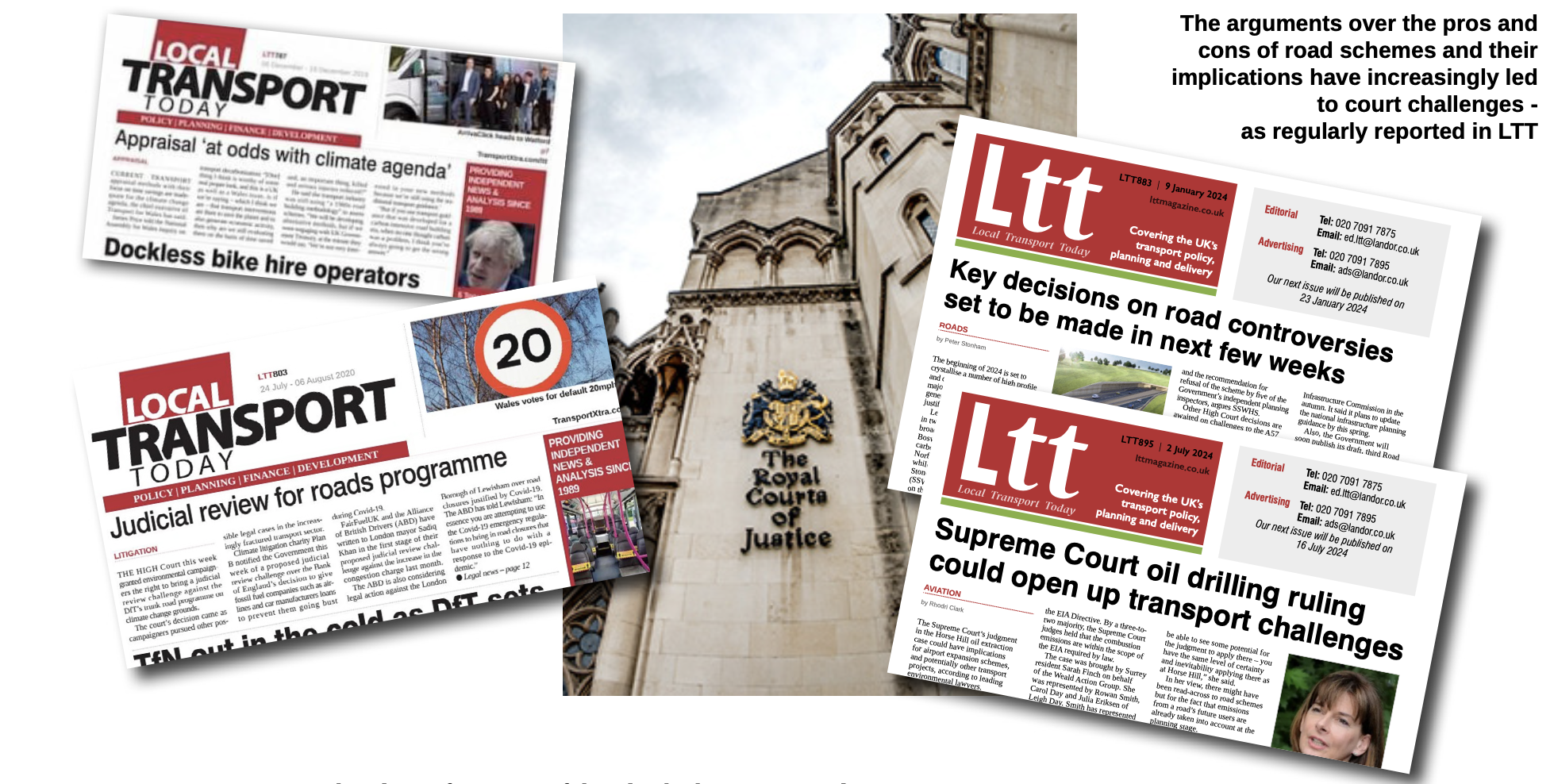
However, at the time of writing, there has been no comment on what to do about a large queue of contentious road proposals and plans inherited from the previous Conservative Government, or about the residue of a highly divisive style of debate about the merits of local traffic schemes.
Addressing both these issues would benefit from a pause to reboot the terms of debate, establishing the truth of technical assumptions and the validity of the judgements underpinning them, as well as the reliability of the evidence base and modelling approaches. Such a pause can facilitate a reconciliation between road proposals and other related policy objectives, and allow a greater focus on the public good, with a more securely evidence-based discourse of criteria for appraising plans and evaluating success.
What should be done?
My proposition is not a suggestion for delay in advancing the Government’s transport priorities.
On much of that the energy now in progress is very welcome, and initiatives are starting from day one.
But with the doubts and controversies surrounding the basis of wider and longer-term roads planning there needs to be review and amendment of the previous Government’s announced road schemes, definition of the future roads programme, and the traffic forecasts underpinning them.
Alongside this the previous Government’s rhetoric about ‘ending the war on the motorist’ needs to be replaced by a much more thoughtful analysis of traffic policy and its wider objectives.
There is a long list of controversial inherited road schemes, and uncompleted planning for another tranche of those planned for the next five years, awaiting decision by the new Secretary of State for Transport and her ministerial team.
The first problem is that all these schemes have been selected and designed in the context of earlier Governments’ priorities, as they were initiated several years ago when the planning process started. Their appraisals have been partly updated for later information, but do not fully take account of the effect of recent developments notably the effects of Brexit, Covid and migration on economic growth, population and work styles, or the latest available Department for Transport (pre-election) guidance on traffic forecasts, carbon emissions and the treatment of uncertainty.
Most of the schemes, and definition of the Road Investment Strategy (RIS3) road programme for 2025-2030, have been delayed. They have proved highly controversial, and in some cases now offer worryingly poorer value for money than had been promised some years ago when they were initially approved in principle. This is partly due to welcome tightening of the technical advice given in DfT guidelines on appraisal, and partly to mounting problems of environmental damage, and changed economic and social conditions, and transport prices, from the embedded expectations of previous decades, much changing the final balance of costs and benefits.
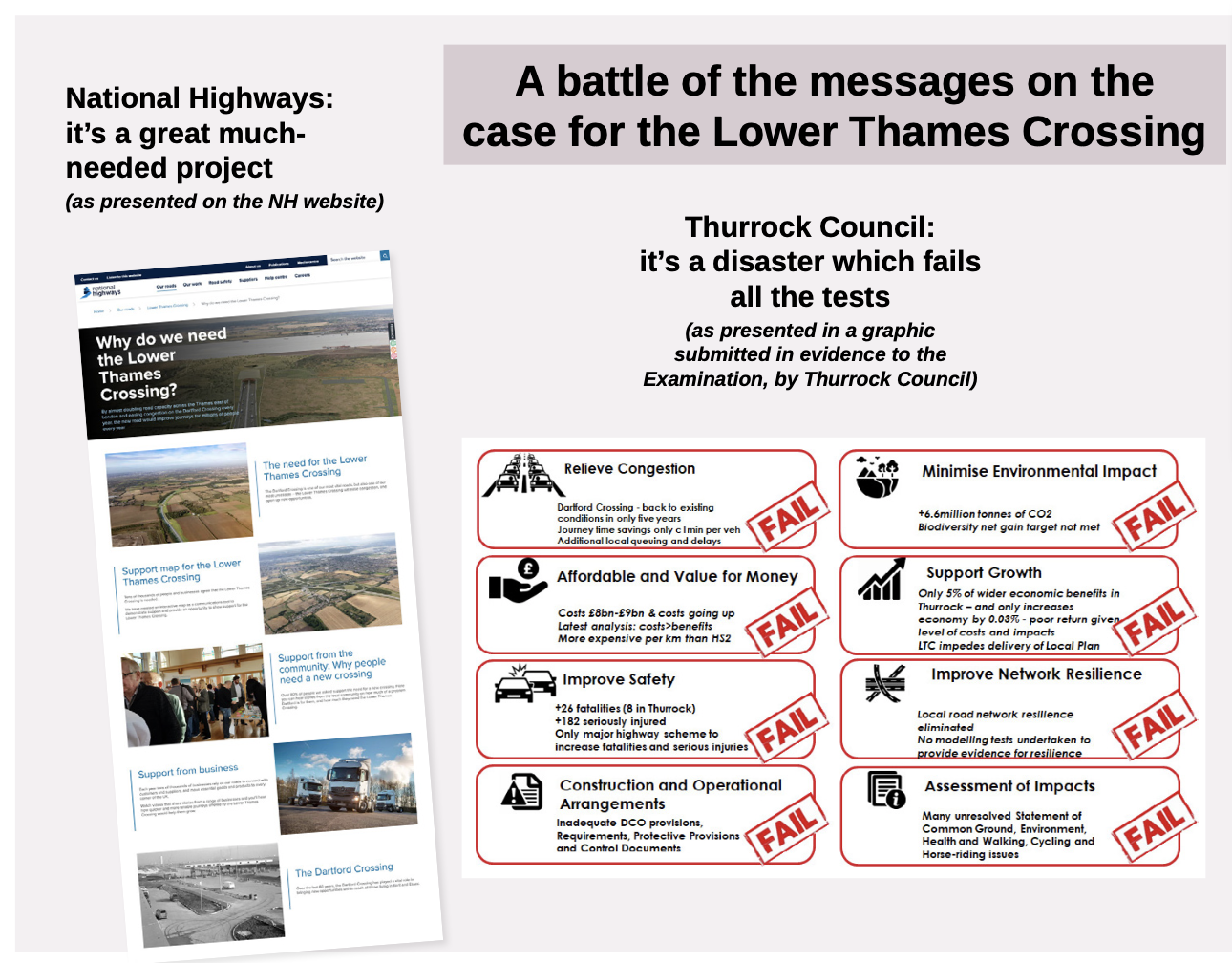
In a previous article (TAPAS, 31 October 2022) Phil Goodwin explored the different positions held by the proponents and opponents of the major Lower Thames Crossing project
I have done some work on the appraisal outturns of the largest and highest profile of these schemes, the Lower Thames Crossing, and Stonehenge A303 (and less so on the A38 Derby Junctions scheme), and read news reports of some of the others. Typically, the calculated traffic benefits consist of a period of relief from congestion (in some cases a short period, not much longer than the period of disruption and delays due to the road works), followed by a longer period in which congestion is forecast to grow again despite the new capacity offered to, and past, the current conditions. As well as the estimated changes in travel times, there are estimates of possible wider economic benefits, though the technical basis for these is acknowledged to be less certain). Calculated carbon impacts are given, though challenged and partial, and other environmental effects, on air quality, particulates, bio-diversity, noise and local damage do not currently command a high profile in decision making.
The formal appraisal calculations are based on comparison of National Highways’ forecasts with the new scheme in place, compared to their forecasts for an alternative counter-factual future without the scheme. This effectively means that whether conditions are better or worse in absolute terms is treated as irrelevant. But ‘better than it would otherwise have been’ is a less convincing policy advantage if conditions are actually getting worse, and I would suggest that the duration of any reduction in congestion is important, and should be given weight.
The highest profile ‘flagship’ schemes, such as the proposed Lower Thames Crossing[1], and the Stonehenge A303 tunnel, are the least satisfactory and most controversial. For LTC, in spite of thousands of lengthy technical documents, the crucial economic and environmental case has still not been supported by agreement on the evidence. Access to the most crucial aspects of the technical modelling has been denied even to registered interested parties, and not provided in full form to the Examining Authority conducting the public inquiry. For Stonehenge, there is a still unresolved issue about the damage done to the heritage site, and the money value attributed to the claimed benefit to taxpayers.
Most important of all, of course none of the schemes in the queue have been designed for the new Government’s priorities on housing and development, or strategies for decarbonisation and economic development, or their connections with its policies on public transport, both rail and bus. It may well be that there will be new road and related public transport proposals to be made, in different places and with different designs, which should now command a place at the front of the queue rather than waiting for several years until the inherited, and questioned, programme is completed.
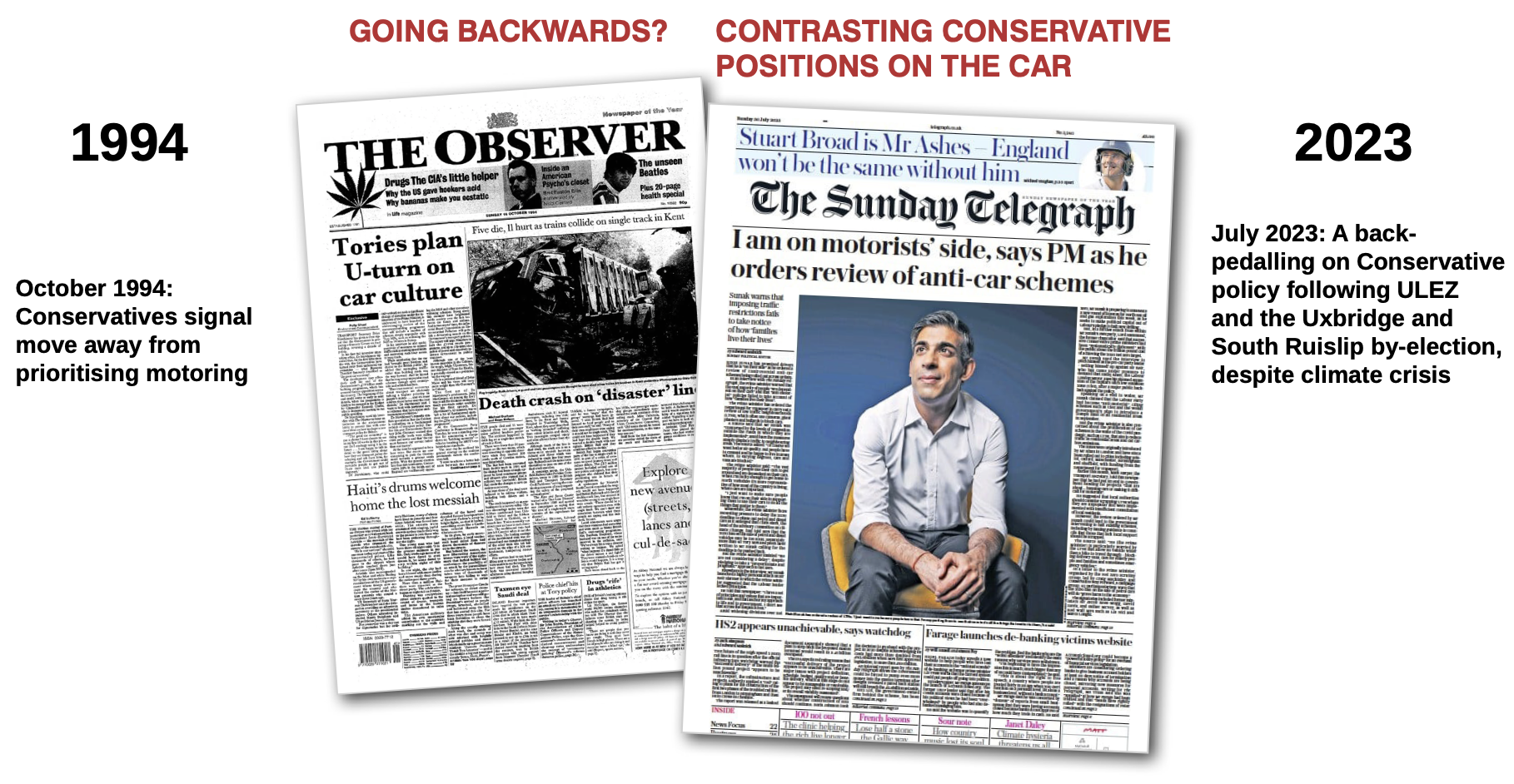
My proposal is therefore that the new Secretary of State should give a swift, decisive announcement of an urgent and fundamental review of National Highways’ and other road promoters’ appraisals, their compliance with the best of DfT guidance, policy, environmental and economic objectives, and their fit with the new Labour Government’s priorities. Vitally, this review cannot be led by National Highways. It has to be independent from their determined championship of their proposed schemes.
A new approach is needed
Going forward, the system should change. Technical appraisal should be undertaken by a new independent expert agency, be evidence-based, transparent, fully applying Freedom of Information principles, and giving open access – at present seriously restricted to a level where consensus cannot be built - to key modelling tools and the data outputs they provide, which dominate national and scheme-specific forecasting. This will enable full cooperation with local authorities and other interested parties. Such a review should extend to other programmes of road building, including the ‘Large Local Majors’ schemes that are the responsibility of local highway authorities. It should include the Sub-National Strategic Transport Bodies (STBs) in England, who may need to review and reconsider the road schemes contained in the back of their regional transport strategies. This is also likely to involve a reconsideration of the wording of the recently revised National Networks National Policy Statement (NNNPS) which has a ‘presumption’ in favour of road building. It would be better to remove this presumption. The argument for and against should be made on its merits.
This process would obviously need to be undertaken with interaction with the devolved administrations in Scotland and Wales. Wales has already carried out a similar review[2], and Scotland has treated traffic forecasts in a different way for the purposes of road project appraisal[3], both giving useful experience for England. Following the results of the General Election, it may well be that there is a possibility of agreeing (though not imposing) convergence in the approaches taken in the three British administrations whose road networks join, with useful experience for and from Northern Ireland. An earlier similar reconsideration was undertaken in London, when a Conservative administration was replaced by a Labour one, and set new criteria to judge a large inherited list of proposed road schemes.
The need for such a review - or some other form of independent scrutiny of the technical work underpinning the proposals, and consistency with environmental obligations - has been a topic of concern in a number of recent discussions, including: Report of the Road Investment Scrutiny Panel[4] of Professors supported by the Rees Jeffreys Road Fund whose report was published last year; evidence published by the campaigning group Transport Action Network (TAN) on the National Networks National Policy Statement to the DfT[5] and on the future of England’s roads[6]; evidence submitted to several House of Commons Transport Committee Enquiries, and their reports; submissions from the main professional institutes in transport; policies of key local authorities; and discontent expressed by the interested parties at several controversial road public enquires.
There have also been several legal challenges to individual schemes and the road programme as a whole. Rulings in those legal cases – some upheld, some rejected, some still pending - have naturally rested on the process of decision taking rather than the policy content of the decisions (treated as the political responsibility of Government) or the technical features of the analyses (treated as outside the competence of Courts), but it is manifest that in general if the policy content and technical appraisals had been more strongly based, and with a stronger consensus of policy, the legal challenges in many cases simply would not have happened.
Separately from the build of new roads there are serious and genuine issues on the planning and allocation of both existing and new scarce road and pavement space among competing claimants to it. These include freight, service traffic, public transport, private and business cars, pedestrians, cyclists, companies and individuals carrying out their business adjacent to roads, or access to water, drainage, communication and sewage network under the road surface. There are inevitably competing interests in balancing out these claims, which must be managed in in an efficient, sustainable and equitable way.
In recent years these claims have been pursued in an increasingly bitter and unpleasant tone, with protagonists armed by statements whose evidence is weak, and challenged even when strong.
Much of this debate has been carried out using the adversarial and dismissive language and styles of social media – sometimes anonymous, without transparency on the location or standing of discussants, and without conventional standards of reference to published evidence. In line with the cultural norms of some social media, there are allegations of conspiracy and lies, which have in turn sometimes produced unacceptable incivility and even damage and violence between more and less vulnerable road users.
This is not to say there is not a debate to be had, or prejudge the actual merit of the arguments. But the discussion must be ‘deweaponised’. A necessary condition for that is that claims of the environmental and social impacts of local traffic schemes must be analysed in the context of data, assumptions and policies of real trends in overall traffic volume.
If traffic continues to grow, it is inevitable that so too will the conflicts on use of road space. In this case there will need to be more intense application of some forms of rationing, reserved space, priorities, pricing or other tools of traffic management for efficiency and equity, each with their own particular effects on the differential advantages and disadvantages of specific groups. Or, if no policy action is taken, the unfettered operation of the market will create its own, different, damaging unmediated impacts on the various claimants for space and other environmental and economic consequences.
On the other hand, if overall traffic volume can be stabilised and in some cases reduced, which will have its own differential effects on efficiency and carbon, there are possibilities of delivering improvements to all the contending claims, in proportion to their importance and role in wider economic and environmental objectives.
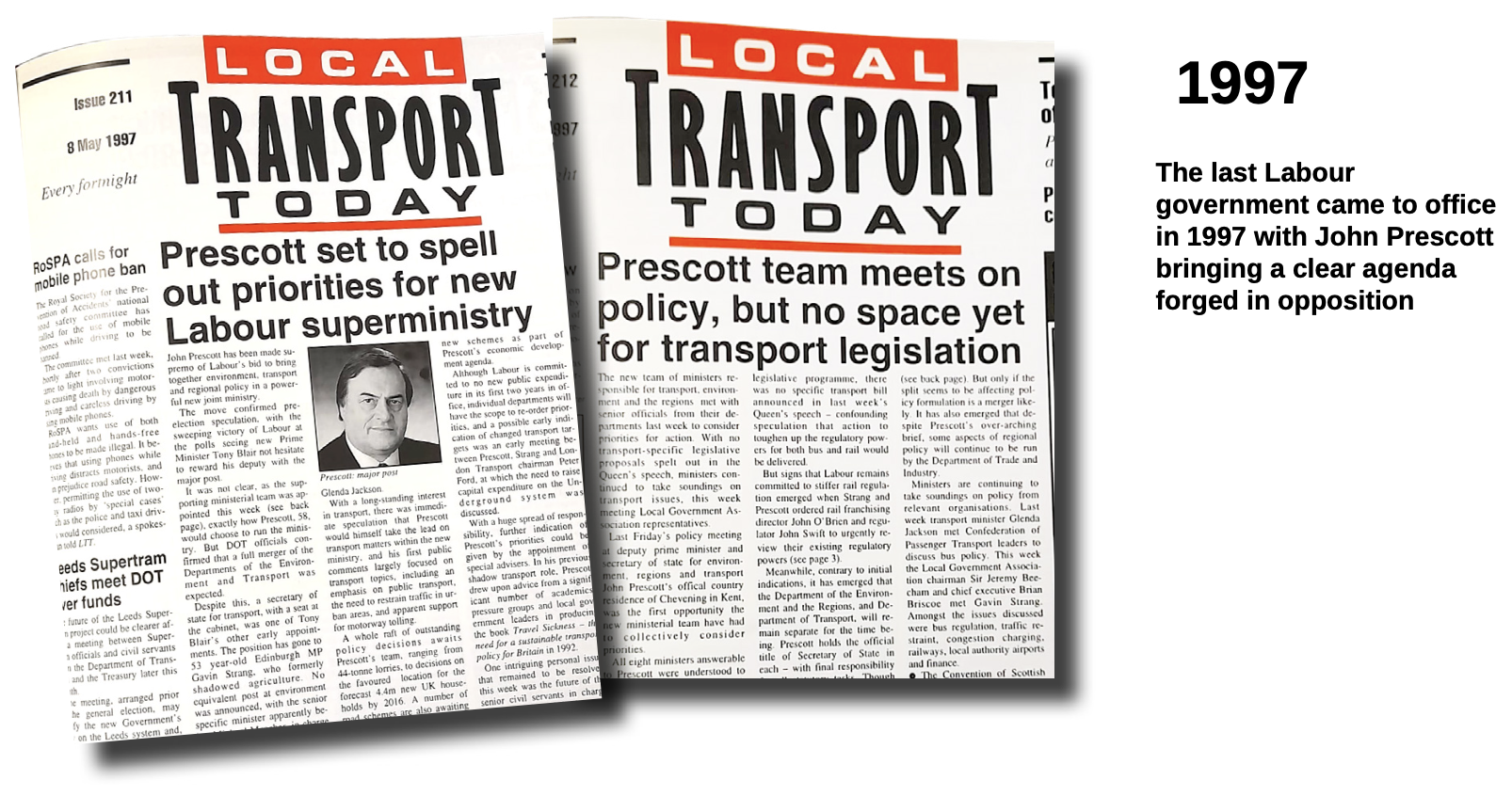
The doctrine of ‘de Minimis’ in carbon appraisal (the idea that no road scheme is likely, on its own, to affect the possibility of achievement of the Government’s carbon objectives, because each scheme will affect only a small proportion of the total carbon emitted into the atmosphere) was – maybe – legal, but it was not sensible, and should be explicitly rejected.
The nature of technical appraisal of roads and traffic proposals
As a function of effective and trusted public policy, there must be generally understood frameworks and mechanisms for informed decision-making.
In general terms, I am in favour of the principles and recommendations of most of the DfT technical advice on forecasting and appraisal, embodied in a series of TAG[7] (Transport Analysis Guidance) notes, especially when fully incorporating the important innovations launched on embracing ‘Uncertainty’ since 2019, and the expanded guidance on Business Cases by the Permanent Secretary and chief officials in January 2021 and its successive updates[8].
This is not to say that the current techniques are yet fully adequate to the task. There are still important improvements which need to be made in terms of the definition of what alternatives to any specific scheme need to be considered, the range of different futures which are relevant, the implications both of success and failure in achieving environmental objectives, and consistency with the mounting body of evidence on traffic responses to changing conditions, both for passengers and goods vehicles[9]. Indirect economic effects[10] are still the weakest area of technical evidence and calculation, with particular problems of empirical evidence[11] and in the assessment of the business responses to new road capacity, which conflicts with the DfT’s own analytical evidence, and undermines the reliability of estimates of changes in traffic flows of light and heavy goods vehicles. If extra road capacity induces more goods traffic (at present assumed not to happen) this will create extra congestion costs for both cars and lorries.
The present structure of appraisal, I believe, is capable of making those improvements: until that has been done, there should be explicit consideration of the potential for bias in appraisals of specific schemes.
The net result of the actual implementation in practice of the best advice, in relation to each specific important road scheme and the assessment of the roads strategy as a whole, has until now regrettably been inadequate. When important improvements have been made – notably in relation to the treatment in appraisal of uncertainty – National Highways has not yet fully implemented this in any work open to public scrutiny, which particularly affects the reliability of estimates of value for money. I believe this is partly due to a conflict of goals set for National Highways and its predecessors, as between their roles of designer, promoter and champion of major schemes; as manager of the strategic road network, including, as they see it, their responsibility to ‘deliver’ the schemes they promote; and their role as appraiser of their own schemes. The result has been a closed and secretive control of the models, even though these models have been developed with public funding. All these models (including their internal working) should be open, accessible, and subject to scrutiny by all recognised interested parties, and new arrangements should be set up so that the data, crucial appraisals of forecasts and value for money are carried out by an independent agency which is itself subject to audit and public scrutiny.
In this context, we cannot avoid confronting the issue of traffic growth and forecasts, because it confronts us whether we like it or not. It is hugely important that the DfT has avowedly rejected ‘predict and provide’ - the idea that one should simply forecast traffic and provide the road space to cope with it. But the practical implications of this change keep sliding away, as discussed below.
Lessons from the Past
Confronting the reality of the impossibility of building all supposedly necessary road capacity is not a new development. The ‘predict and provide’ planning procedure for roads had to be abandoned in the aftermath of Margaret Thatcher’s 1989 ‘Roads for Prosperity’ road programme, when it became clear that a road programme even twice as big as that proposed would not keep pace with the traffic forecasts. This was further underlined by the 1994 technical work of the Government’s Standing Advisory Committee on Trunk Road Appraisal, SACTRA, on the additional traffic which is induced by extra road space itself, especially in conditions of congestion[12]. Taken together, building more and more roads could not produce sustained reductions in congestion overall. It could only slow down the pace at which congestion got worse. Unless alternative policies are implemented at a sufficient scale to close the gap, ‘Predict and Provide’ in practice inevitably meant ‘predict and underprovide’.
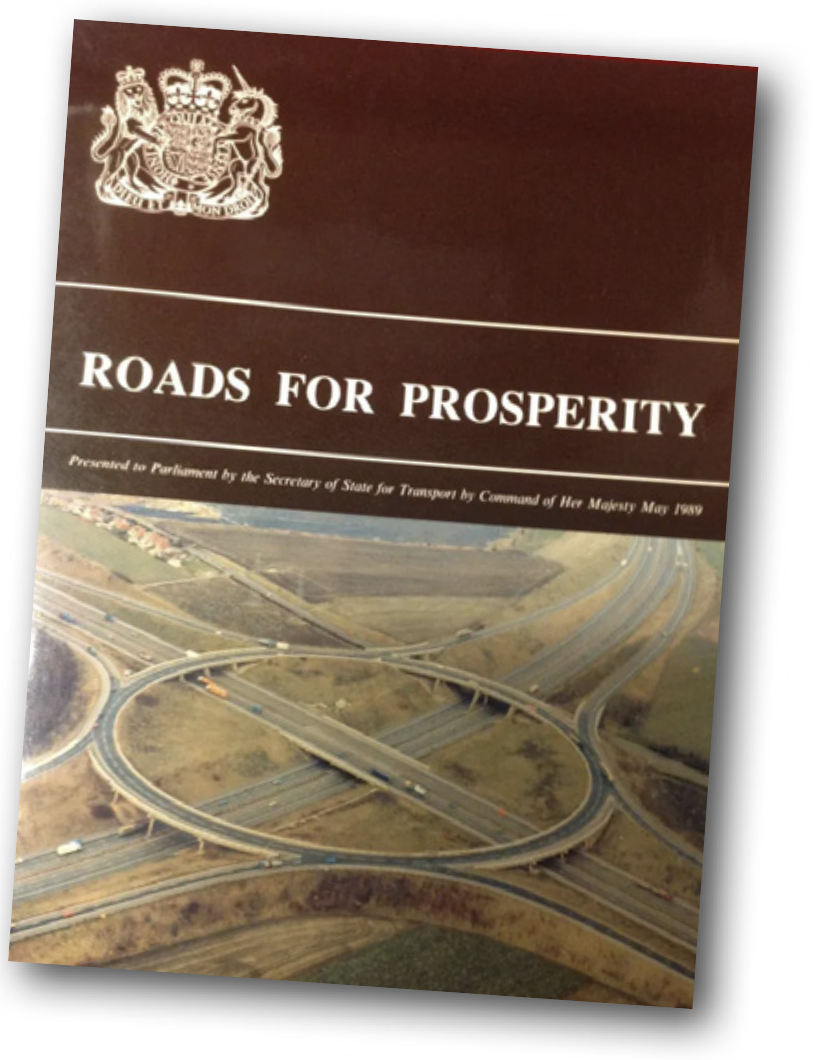
The Conservative government in 1989 set out a transport policy heavily focused on expanding road capacity to meet demand. But soon the SACTRA Review pointed out the true shortcomings of the approach
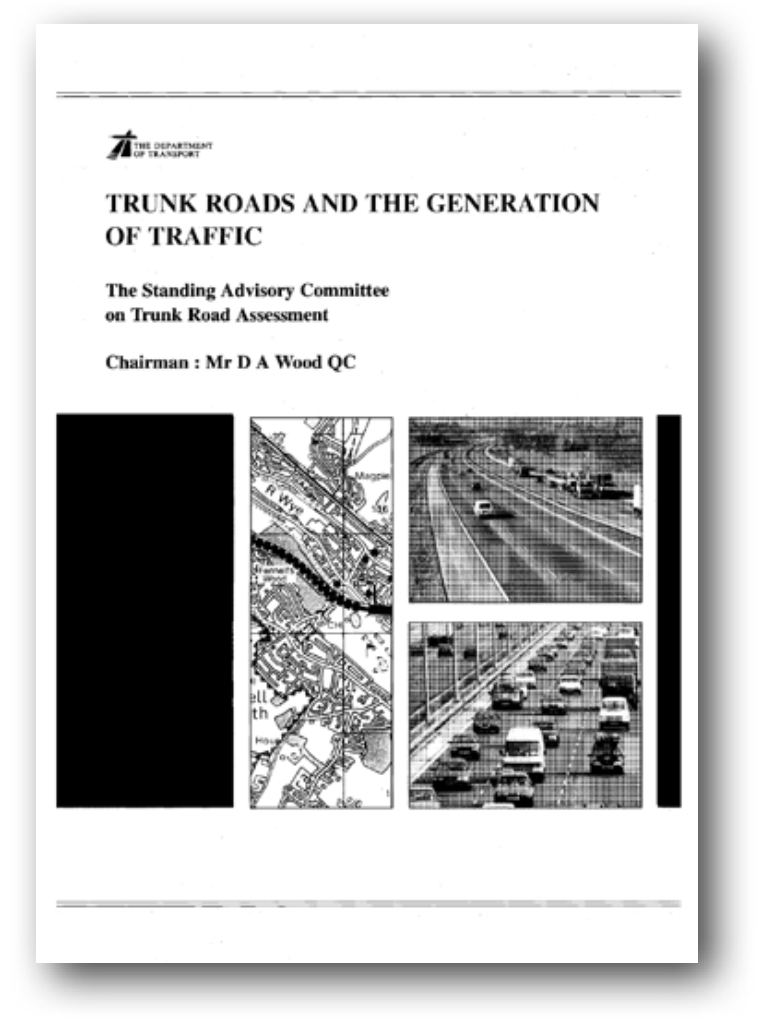
In such circumstances , the traffic demand would have to be managed, whether it was politically expedient to say so or not. The key issue was therefore to find politically acceptable ways of managing traffic, aimed at making travelling conditions better overall, rather than just slowing down the pace at which they get worse, and securing as deep a consensus as possible as between the contending claims on scare road space, and their environmental, economic and social consequences. This was all accepted by the then Conservative Government in the period 1994-5.
The last time there was a new White Paper on Transport by a Labour Secretary of State of Transport following a long period of Conservative rule, it was the work of the then Deputy Prime Minister in the Blair Government, John Prescott. At a time of apparent broad agreement on the fundamentals of policy, in his 1998 white paper ‘A New Deal for Transport, Better for Everyone’[13], it was even possible for him to write the following in its opening paragraph:-
‘There is now a consensus for radical change in transport policy. The previous Government’s Green Paper paved the way with recognition that we need to improve public transport and reduce dependence on the car. Businesses, unions, environmental organisations and individuals throughout Britain share that analysis’.
Sadly, it would be difficult to write the same paragraph now. On paper it is possible – just – to find individual statements scattered through various documents suggesting that the same consensus remains, but with substantial caveats. In recent years the tone of political debate generally has not been marked by the language of consensus as a necessary objective. The role of social media has strengthened the ability of much wider groups of people to engage in debate about public policy, which is very positive, but it has recently tended to replace civilised discourse by toxic language and divisive dog whistles. Standards of evidence have not always been followed. This has extended in particular to the manner of debate about initiatives aimed at shifting priorities among road users, in accordance with their economic efficiency environmental impact, or social need. The related rhetoric of ‘war on the motorists’ has been divisive and distorted.
The key unresolved issue (conveniently generally neglected) has been the contradictory treatment of traffic growth. A potential consensus approach was indeed expressed by the previous Government’s approach, for a time, under Boris Johnston’s premiership , in Transport Secretary Grant Shapps’ 2021 White Paper ‘Decarbonising Transport: A Better, Greener Britain.[14]”
This Decarbonisation Strategy, in its initial launching, as well as giving prominence to electrification of vehicles, made some very explicit, achievable and radical suggestions for very substantial reductions in road traffic volumes in towns. It proposed, as well as 50% of all urban journeys to be by walk and cycle, a substantial improvement of public transport overall, which would make walking, cycling and public transport, an “attractive first choice for all able to do so”.
Overall there would be an increase in car occupancy, and the application of land use planning to reduce unnecessary travel. Although much of the discussion related to towns and cities, such developments would also have spin-off effects on the interurban road network, because of the very high proportion of interurban trips which are carried out in cars owned by people living in urban areas. This, together with the improved interurban public transport it proposed, and changes in living and working patterns, would open a quite different perspective for of the overall total traffic forecast, with ‘the possibility of reductions, or at least stabilisation, more widely’.
Not all observers took the Government’s commitment to these suggestions seriously. But my view at the time was that they did constitute realistic and achievable objectives, and if they had been followed we would, I think, now be in a position where one could imagine a transfer of political power to be done with similar consensual language as John Prescott used in 1998.
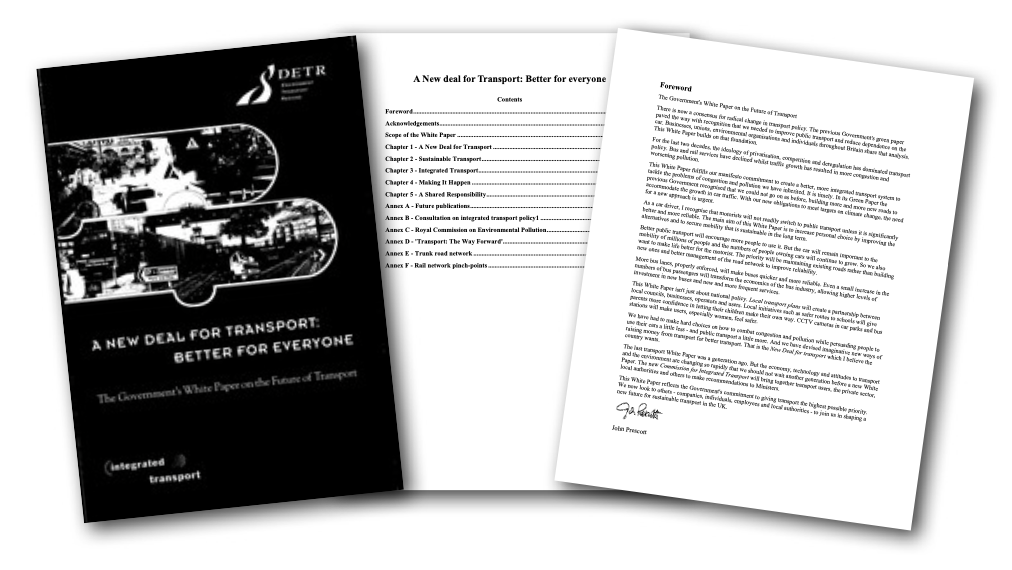
The new Labour Government in 1998 produced a transport white paper building on the common ground that had by then characterised the policies of both main parties and which was acknowledged in the forward by John Prescott
This would have been made easier by the effective implementation of creative and far-reaching changes in DfT official advice on how to treat uncertainty in appraisal. This conceptual approach is inherently much more adaptable to the evolution of transport policy – and changes in political power - than if transport policy is focussed excessively on a single, more or less inevitable, forecast of traffic growth. These changes were indeed trialled by progressively more explicit changes in the format of national road traffic forecasts in 2015, 2018 and 2022, (when re-named ‘Projections” ) and required that these scenarios are included in calculating value for money, a change launched by the Permanent Secretary and other senior DfT officials in 2021, and warmly welcomed by their external technical advisers. That value for money calculations should be done and reported separately for each of the specified scenarios is clear, but how to draw those together into an overall conclusion is not specified, and the tendency in practice has been to focus much more on the ‘core’ value, which dominates attention, as though it had the same standing as the old ‘most probable’ future.
But the sustainable policy initiatives at the core of the strategy as launched, were eroded or weakened in practice. Some parts simply stopped being mentioned, and National Highways decided to delay, or downplay, the crucial tests of value for money. Their position, as expressed in the most recent and largest ever appraisal carried out, for Lower Thames Crossing, was that they did not need to report these calculations to the Examining Authority in the public examination, which should nevertheless recommend acceptance of their proposal without this information, and the necessary work on the prescribed value for money calculations would simply not be carried out until after the Secretary of State has approved the scheme. However, the DfT announced in May 2024 that the decision on LTC would be delayed until October, because of the General Election.
It is therefore not yet publicly known what the Examination Authority has actually reported.
National Highways have applied the same reluctance to carry out and publish value for money tests for the current wide range of scenarios to other schemes now in the pipeline. If that work has since been carried out in private and its unpublished results reported to the new Government, it must be with the caveat that they have not been subject to scrutiny at public inquiries, or made available to local authorities and registered interested parties for critique and discussion.
Clarifying the official advice
In principle, I think the new government should support the current official advice on uncertainty in forecasts, specifically to replace the assumption of substantial, uninterrupted traffic growth indefinitely into a ‘most probable’ future, by consideration of a number of alternative possible futures. This would be accompanied by testing the economic and environmental performance of schemes and policies under all these scenarios. Such an analysis is necessary to give a proper focus on the robustness of decisions to an inherently uncertain future. Publication of such tests of robustness should surely be a necessary condition for approval of any scheme. Insofar as there has been a difference between official guidelines and National Highways practice, I would say – support the official guidelines, not the National Highways reinterpretation of them[15].
There is, moreover, an important caveat in relation to those issues on which the present sensible and necessary principles do not yet go far enough. The most recent (2022) traffic projections did envisage a set of futures in which traffic grew over 35 years by a range from 8% to 55% ie all of them still imply net traffic growth. Closer scrutiny however shows that this is not a complete summary of the present principles. The published range is to some extent an accidental result of which factors were combined with which, with more emphasis on those fostering traffic growth than those reducing it.
In the futures which now face us, there are potentially five different mechanisms which may reduce traffic growth, or reduce the actual volume of traffic. These are:
-
Evidence[16] since about 1990 of a trend in lower car use by each successive cohort of young people, to some extent maintained as they grew older, due to a complex mixture of positive and negative pressures;
-
The effects of lower economic growth
-
New social patterns of work and leisure such that the previous strong link between economic growth and traffic growth might be reduced, or even reversed, including working from home, on-line social and business activities, and the replacement of some car trips by home delivery.
-
The potential effect, in the event of failure or insufficient success in policies to reduce climate change, at global level, that local and global disasters would disrupt opportunities for travel.
-
The potential effect, in the event of success in policies to reduce climate change in a way that would reduce car dependence and improve the quality of alternatives, thus reducing the pressure for traffic growth without harming economic growth.
-
The adoption of planning policies favouring new housing, job creation, shops, health services and leisure in areas where good provision of walking, cycling and public transport are easier
As against this, there are also wider effects which might increase traffic growth even further, including:-
-
Higher car dependence if financial incentives to increase electric car ownership and use by reducing the costs of using them, especially as petrol and diesel taxation is progressively reduced in real terms, and electric vehicles are not subject to corresponding taxation.
-
Higher economic growth without any compensating decoupling as mentioned above
-
Planning policies favouring development in locations where private car use is the only practical method of transport, ie the reverse of above.
-
The unexpected effects of a market shift in manufacturing and purchasing of cars to favour much bigger vehicles such as SUVs, which has the same effect on increasing the pressure on road space, even if the number of cars or mileage travelled reduce.
Some of these factors in both lists would be welcome, and others unwelcome, but that is a different issue. The point I would make is that there are relationships in operation which mean that there are much varying but seriously possible trajectories of growth or decline in traffic, which are even wider than the 8% to 55% range mentioned above, and including the possibilities that open up if traffic volume reduces.
Importantly ,the forecasts do not include the effect of different Government policies being followed than those which are already committed. This is a decision, not an inevitable approach, and something that can be altered by an act of will. I would contend that the future traffic conditions which should be used to inform the appraisal of road schemes must logically include investigation of the variation which would be due to policies necessary for their success, even if they have not yet been committed.
One example which demonstrates this point is the experience of an exercise in transport policy launched by Chancellor Gordon Brown and Transport Secretary Alastair Darling in 2005-6, in the last period of the Blair Labour Government. This was DfT work[17] for the Eddington Transport Study on Transport and the Economy, which included calculations of the effect on possible future road programmes of having, or not having, some form of road pricing system.
The conclusion was that the scale of road programme which (in the form of appraisal used at the time) would be needed if there was a rather modest road pricing would be some 80% smaller than one that would appear justified if there were no road pricing system.
The Eddington Report also initiated a comparison of the value for money of spending on different sorts of transport. The initial, rather tentative, results suggested that there were better ways of spending on transport than expanding road space. This possibility was further investigated in a study commissioned by the Government’s Commission for Integrated Transport, initially set up by John Prescott in launching his 1998 White Paper. The last piece of work carried out by that Commission, under the Chairmanship of Sir (now Lord) Peter Hendy, now just appointed as a Minister of Transport, found many times better value for money had been achieved by from spending on local safety measures, walking, public transport and cycling improvements, than the road schemes pursued at that time[18].
The Commission was wound up by David Cameron as one of his early initiatives on becoming Prime Minister. The new Government might usefully consider recreating it, or another body with similar scope.
Road policies interaction with other Government priorities
There are important interactions of roads policies with other transport policies, especially rail, that the new Government should consider .In particular the inherited list of National Highways road schemes should be assessed against Labour’s declared commitment to set targets for modal shift to lower emissions from the transport sector[19].
Other vitally important interactions are with the Local Plans and Local Transport Plans, Housing and other development proposals, considered by the local transport and planning authorities. This will especially apply to the Government’s proposals to expand house building and the promised creation of a new batch of New Towns, which will raise key issues of the relationship of development with public transport access, housing estate design guidelines, the provision of accessible local facilities, and links to developed centres of activity which are crucial for sustainability[20].

Chancellor Rachel Reeves (centre), and Deputy Prime Minister Angela Rayner (left), as Housing, Communities and Local Goverment Secretary will have significant influence over what transport secretary Louise Haigh (right) is able to do
Finally, there is still an unresolved issue hanging over the transport debate – as it has been for at least 60 years, with rumblings even earlier – concerning the idea of road user charging. A group of transport professors and I submitted evidence to a recent Transport Committee Inquiry suggesting that in principle this could still have very powerful advantages, but would need a carefully planned approach to implementation[21].
It is possible of course that this contentious subject may continue unresolved, but for any Roads Review the general appraisal and policy issues will continue to be profoundly influenced by the fact that transport pricing and costs do, and will continue to, affect traffic levels whatever policy decisions are taken. Coping with current transport prices which do not reflect the costs of congestion and pollution is no less crucial than the problem of transitioning to a better system of pricing.
One possible short term approach, in line with a breathing space to reset the terms of public discussion, would be to treat the existence or otherwise of road charging in the same way as other aspects of an uncertain future, testing the performance of particular policies and schemes both with a scenario of the current structure of prices, and another where there is a form of road user charging aligning prices with the costs of pollution, congestion and other effects of road use.
If there is a desire to keep, in principle, the option open for a cost- based road charging scheme at some time in the 60 year appraisal lifetime of a road scheme, this would give good insight to contingent judgements now.
A Roads Review – Open or Closed?
One question to be addressed is whether a roads review of the kind I have suggested should be carried out essentially as a backroom technical activity, undertaken by a suitable group of technically qualified experts who would write a report which would (no doubt) by published for public consultation; or in the form of an inquiry to which interested parties could submit evidence and views. This could be similar in form to those carried out by the Parliamentary Select Committee on Transport (which has a well respected record of carrying out such studies, and would surely in any case want to investigate such a review if it is carried out); or in a quasi-court fashion, with expert witnesses called by interested parties who would be in favour of, or against, going ahead on a scheme-by-scheme basis.
The key reality is that there is a strong body of knowledge and expertise which has been built up in the community as a whole, in Local Authorities, Professional Institutes, Universities, the different transport industrial sectors , the consultancies who make their living from designing and assessing road schemes (and are sometimes informally candid about their problems); and businesses and residents in areas affected by their transport facilities, and in the country as a whole.
The role and evidence of the Committee on Climate Change will meanwhile be crucial in any review, because of the fact that what happens in the transport sector is highly significant for what happens to decarbonisation in the country as a whole. All this evidence should be thoughtfully, critically, fairly and independently assessed.
I think there are advantages of each of the review processes I have suggested, but in all cases success will depend on the quality of its analysis, trust in the assessment, and the ability to command a wide consensus on its results. It is never likely that there could be 100% agreement, but my view is that it would be possible, through strong evidence, discussion and deliberation, to reduce the areas of disagreement very substantially, command respect for the integrity of the process, and develop an approach with a strong theoretical and empirical evidence base, and a clarity about the remaining final choices, which would properly remain for Government decision.
References and Links
-
See my reviews of current road scheme appraisals on the TAPAS network:
Decision time for England’s biggest road project. What are the implications? (Part One)
Decision time for England’s biggest road project. What are the implications? (Part Two)
-
The Future of Road Investment in Wales: Advice from the Independent Panel appointed by the Welsh Government, (Dr Lynn Sloman, Chair). Of course the Welsh Government did not necessarily follow all its recommendations – as could also be the case for a similar exercise carried out in England – but the experience in how to select advisers, set objectives, construct a methodology and seek an independent consensus was a very useful one.
-
Scottish Transport Appraisal Guidance – Managers Guide (2022)
-
Transport Action Network response to DfT consultation on NNNPS (June 2023)
-
TAN response to Shaping the Future of England’s Roads [RIS3 consultation] (July 2023)
-
https://www.gov.uk/guidance/transport-analysis-guidance-tag. (and see author’s note below)
-
Kelly, B, Rowlett A and Morgan L (2021) Transport Business Case Guidance updated 16.12.2022
-
Decarbonising Transport - A Better, Greener Britain. In the introduction, written over Grant Shapps signature, there are two crucial sentences. He wrote “We want 50 per cent of all journeys in towns and cities to be cycled or walked by 2030” . The other says “Our ambitious roads programme reflects – and will continue to reflect – that in any imaginable circumstances the clear majority of longer journeys, passenger, and freight, will be made by road’. The word ‘reflects’ is doing a lot of work there, with the implication of ‘is justified by’, which does not always follow.
-
National Highways is separate company of which the Secretary of State for Transport is the sole shareholder, and it is not clear that there could be any such difference between them, even if an external observer like myself might sometimes conclude that there seems to be. The DfT, in answer to a FoI request for details of correspondence between NH and DfT, has refused on the grounds that this is an internal matter within the DfT. The problem is that the DfT is also the assessor of the technical appraisal claims reported by NH, and in the absence of publicly available independent technical scrutiny this creates an obvious difficulty of public confidence.
-
All of CfIT’s publications were archived following its abolition, and I have not found the track to this report. But I submitted a summary of it to the Transport Committee inquiry on Transport and the Economy in September 2010, (which will be available here shortly). My report to CfIT is Goodwin P (2010) Opportunities for improving transport and getting better value for money by changing the allocation of public expenditures to transport.
-
“Labour will set targets for modal shift to lower emissions from the transport sector”. (Page 16)
-
See, for example, recent debates about that issue in Oxfordshire, in https://poetsplanningoxon.uk/poets-planning-and-the-housing-crisis-paper-180921.pdf
-
Goodwin P, Anable J, Lyons G, Marsden G, Parkhurst G ( 2021)Written evidence submitted to House of Commons Transport Committee Inquiry on Electric Vehicles and Road Pricing https://committees.parliament.uk/writtenevidence/21473/pdf/
A note from the author
I should say that I have spent a large part of my postgraduate career since 1974, at the GLC and the three Universities of Oxford, UCL and UWE, carrying out officially commissioned work on the technical details of government transport appraisal advice. Since 1990, I have been appointed by successive Secretaries of State for Transport, both Conservative and Labour, to the technical advisory committees SACTRA and JADP which deal with matters of modelling and transport appraisal. My advice has not always been followed, of course, but I do have an understanding and sympathy for their structure and objectives. I am also only too aware of their continuing need for improvement, and remaining weaknesses, and have contributed critical reviews as a technical witness in some legal cases, evidence to Parliamentary Transport Committee, and Public Enquiries about continuing problems.
Professor Phil Goodwin is Emeritus Professor of Transport Policy, University College London and University of the West of England. He was head of the Transport Studies Unit at Oxford University for 16 years, before moving to UCL in 1996.
This article was first published in LTT magazine, LTT896, 17 July 2024.
You are currently viewing this page as TAPAS Taster user.
To read and make comments on this article you need to register for free as TAPAS Select user and log in.

Log in